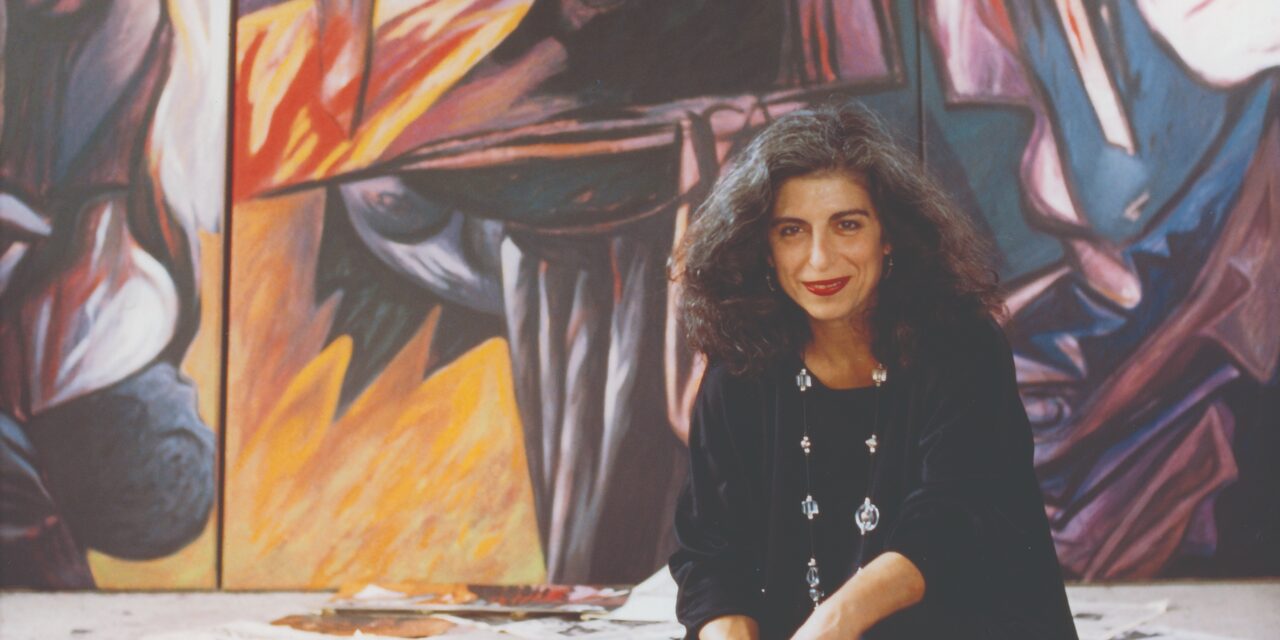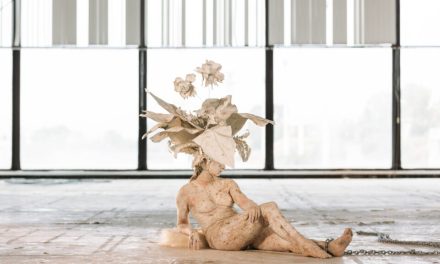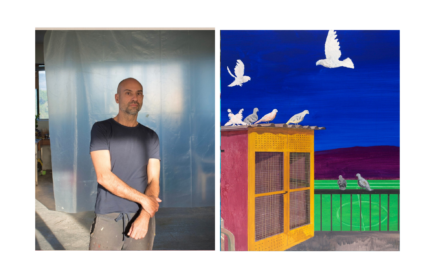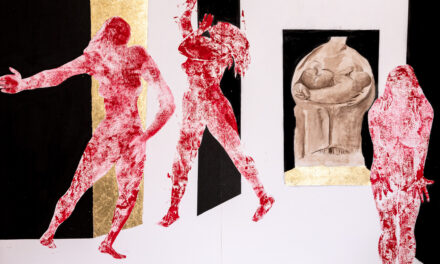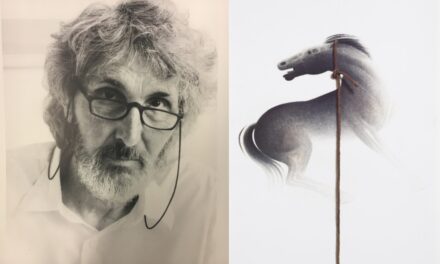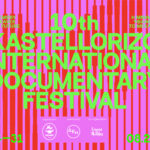The exhibition The Consistency of the Painting Process, currently on view at the National Library of Greece, provides a unique opportunity to explore the work of Hero Kanakakis, a prolific visual artist who passed away at the age of 52.
The exhibition, featuring sixty artworks, leads us through her artistic quests and pursuits. Kanakakis’ artistic trajectory was initially shaped by the grim political climate of the Junta in Greece and subsequently by her stay in England. Kanakakis experimented with a wide range of techniques and was strongly influenced by various art movements as well as political and personal circumstances. Initially influenced by critical realism, she moved on to magical realism and surrealism, pop art, English post-war painting, and the neo-expressionist movement of the 1980’ and finally experimented with a deeply subversive expressionism.
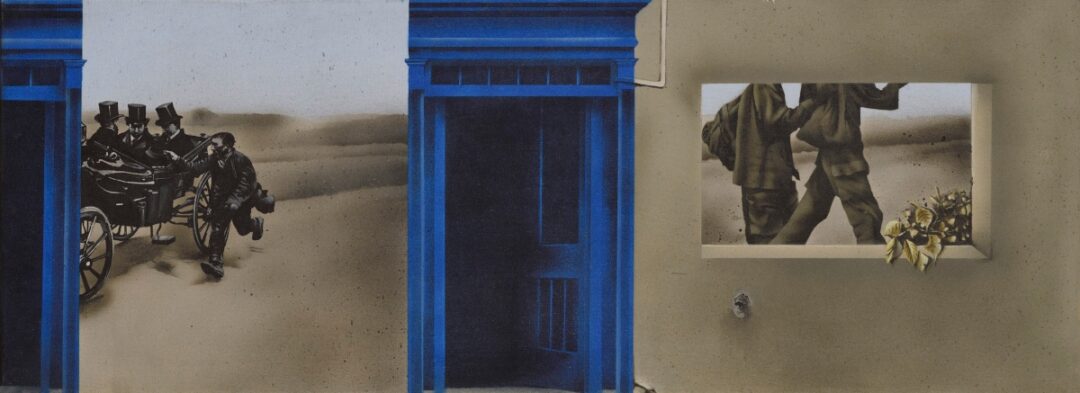
Hero Kanakakis was born in 1945 in Piraeus. She studied at the Athens School of Fine Arts and soon joined the student movement as a leading member of the Lambrakis Democratic Youth. In the first days of the military coup of April 21, 1967, she was arrested and exiled to the island of Gyaros. After returning to Athens, she graduated with distinction in 1969 and in 1972 she created the cover for the first issue of Anti magazine which was published in May 1972. The magazine was banned by the regime – it was re-issued after the fall of the Junta in 1974.
In December 1972 she held her first solo exhibition showcasing a sharp realistic style coupled with a strong socio-political orientation. In 1973 she married Vassilis Kapetanyannis and soon the couple moved to England, where she attended Croydon College of Art. She also worked for the Greek Service of the BBC (radio), writing and presenting programs focusing on art events, while extensively exhibiting in Greece and abroad.

In 1989 she returned to Greece and began teaching at the Vakalo School of Art. Hero Kanakakis died suddenly in 1997 at her home in Athens due to a stroke, at the age of 52.
Albeit short-lived, her artistic trajectory demonstrates steadfast dedication and honesty. Kanakakis has served her art with unparalleled consistency and perseverance.
Greek News Agenda* spoke with the curator of the exhibition, Spyros Moschonas, about the artistic idiom of this multidimensional visual artist.
The exhibition pays tribute to Hero Kanakaki, bearing the title “The Consistency of the Painting Process”. How is this “consistency” reflected in the artist’s works?
This phrase belongs to the art historian Yannis Papaioannou, professor and dean at the Vakalo School and colleague of Hero Kanakaki, who taught at the school from 1989 until her death.
The phrase was used as the title of Kanakakis’ last solo exhibition in Athens, in March 1995. It was deliberately chosen to emphasize her choice to work with so-called easel painting.
Although Kanakakis had studied printmaking at the Athens School of Fine Arts and later as a postgraduate student at the Croydon College of Art in London, after completing her studies she abandoned printmaking. Eventually, as an artist, she consistently explored purely painting issues (drawing, color, composition). She emphasized representation, certainly evolving her style over the years.
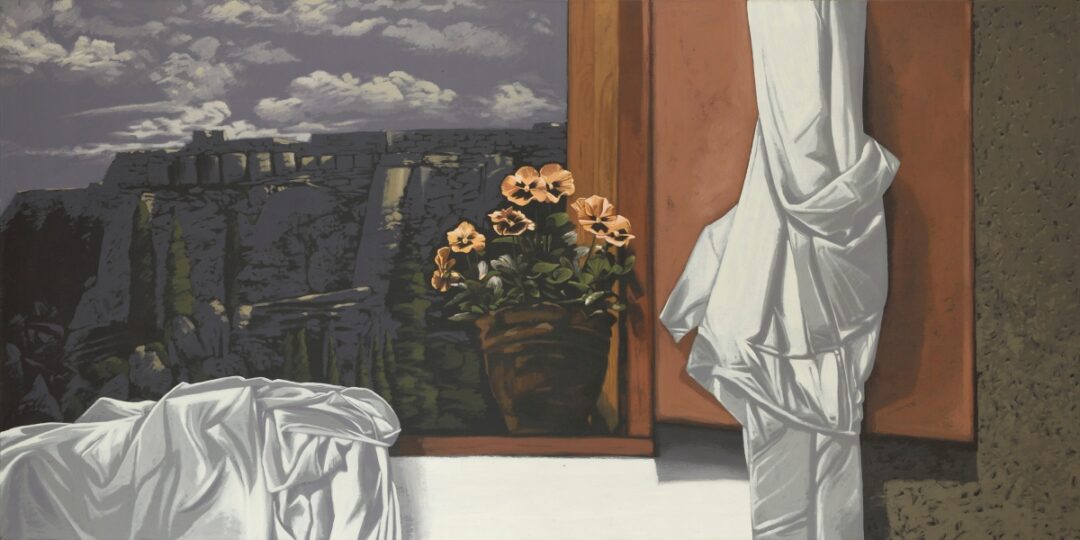
Hero Kanakaki is known for her multifaceted artistic idiom. Her initial realistic approach evolves into intense expressionism, while her compositions bear elements of realism, surrealism and neo-expressionism. How would you explain this constant stylistic adaptation in her work?
Kanakakis is defined by the socio-political conditions in which she lived and created – like all artists, in all eras. The artist does not live outside of society, he is rather an integral part of it. Kanakakis, in particular, was politicized and actively involved in the Greek student movement. At the Athens School of Fine Arts, she was taught expressionist writing with abstract elements.
During the Greek Junta (1967-1974) like many young Greek artists, she shifted towards political art. Later on, she followed critical realism.
When the Junta fell, Kanakakis’ critical realism gradually became magical without losing its political message. This phase lasted until 1980. Gradually, the painter was influenced by her contemporary English art, as she lived in England from 1973 to 1989. Her works in the late 1980s were influenced by painters such as Lucian Freud, Francis Bacon and the so-called School of London. Later, she assimilated influences from Transavanguardia and neo-expressionism. However, all stylistic changes were primarily related to her personal concerns and artistic development.
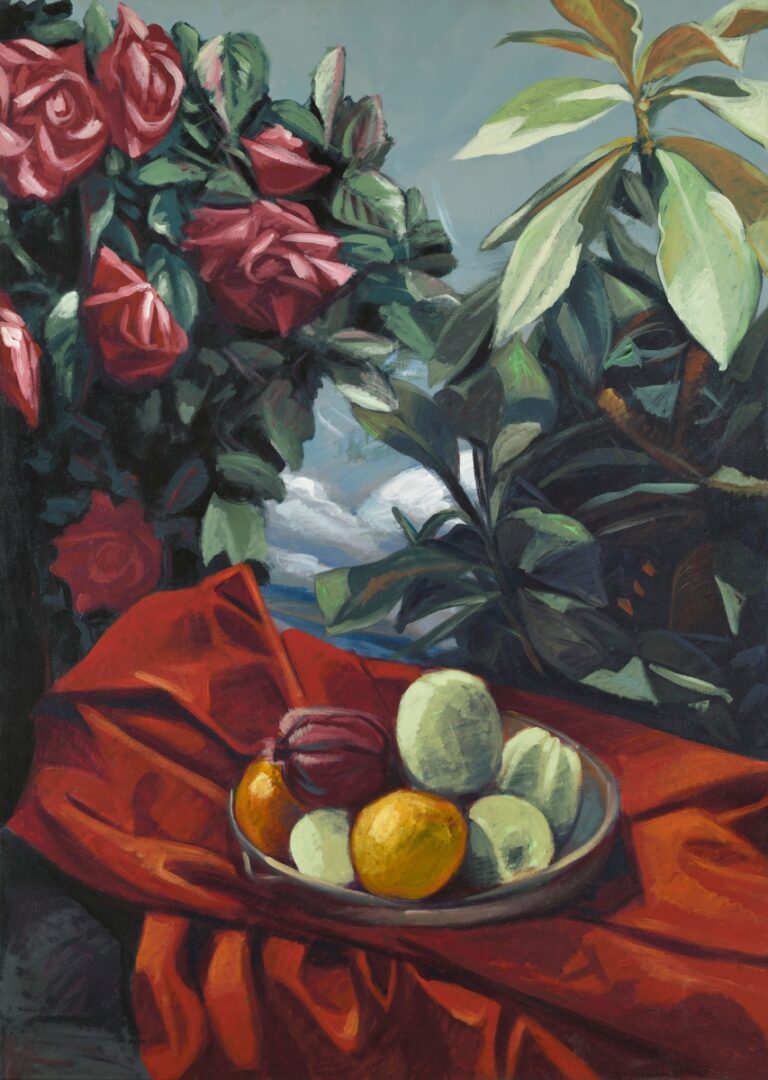
Kanakakis’ early works belong to the movement of critical realism. Do you think there is a similar trend today in contemporary Greek art?
This is a wonderful question. The truth is that when Kanakaki was young, the Junta was a visible and widely recognized as the enemy by the society. Since then, however, political art in Greece has been in decline. At a global level, in terms of contemporary art, politicization and activism were already recovering in the 1970s through forms of conceptual art, such as institutional critique, especially in the New York scene. Similar trends have also existed in Greece.
Following the Greek debt crisis, that caused social tensions and deep wounds, many visual artists produced works with a strong political imprint, especially those expressing themselves through new media, such as installations, video art, internet art, etc.
In that sense, this is a popular trend in contemporary Greek art. It is represented by many artists and explores various contemporary issues such as social inequalities, climate change, refugee flows, minorities, people trafficking, etc., not just a narrowly defined political position.
*Interview by Dora Trogadi
© Vassilis and Constantina Kapetanyannis. All photos by Leonidas Kouriantakis
Read also: “Neo-Impressionism in the Colors of the Mediterranean” at the Goulandris Foundation, The Museum of Modern Greek Culture
TAGS: ARTS

